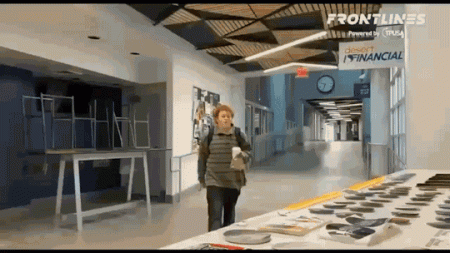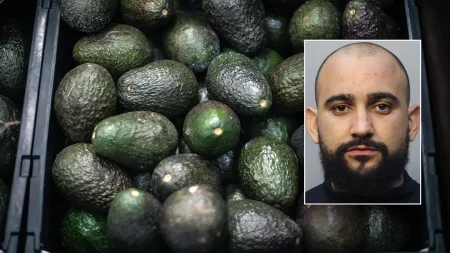Syria’s Fragile Revolution: A Nation Still Mired in Conflict Ten Months After Assad’s Fall
The Unfulfilled Promise of Change Haunts Post-Assad Syria
Ten months ago, jubilant crowds filled the streets of Damascus as the decades-long Assad regime finally collapsed under the weight of determined rebellion. The momentous fall of one of the Middle East’s most entrenched authoritarian governments initially sparked celebrations across Syria and hopeful declarations from the international community. Today, however, that early optimism has given way to a sobering reality. Across the war-torn nation, unchecked violence has become the defining feature of daily life, with competing factions battling for territorial control and political advantage. For ordinary Syrians who endured years of oppression under the Assad family’s rule, the revolution’s promise of peace and democratic transition seems increasingly distant. “We thought removing Assad would end our suffering,” says Amal Khatib, a 34-year-old former teacher from Homs whose family was displaced during the uprising. “Instead, we’ve traded one form of brutality for another.” Recent United Nations reports document alarming rates of civilian casualties, with over 8,000 deaths recorded since the regime’s collapse. Humanitarian organizations struggle to access vulnerable populations as security conditions deteriorate in former government strongholds and contested regions alike. The persistence of violence has led many Syrians to question whether the revolution that cost hundreds of thousands of lives has delivered meaningful change or merely ushered in a new chapter of instability.
Power Vacuums and Fractured Opposition Create Deadly Competition
The removal of Assad’s centralized authority has created dangerous power vacuums throughout Syria, with grave consequences for civilian populations caught in the crossfire. In the northeastern provinces, where Kurdish forces maintain tenuous control, Turkish-backed militias launch regular incursions that humanitarian organizations describe as increasingly indiscriminate. Meanwhile, in former regime strongholds like Latakia and Tartus, loyalist remnants clash with opposition groups, creating shifting frontlines that trap civilians and impede humanitarian access. “The opposition was united in their desire to remove Assad, but they’ve failed to present a cohesive vision for governance,” explains Dr. Nadia Mahmoud, a political analyst at the Middle East Institute. “This fragmentation has created openings for extremist elements and regional powers to assert influence through proxy forces.” The transitional government, established in the wake of Assad’s fall and recognized by several international powers, controls less than 40% of Syrian territory. Its authority is regularly challenged by both hardline Islamist factions and former regime elements. In Idlib province, once the final opposition stronghold during the civil war, rival militia groups now battle each other for control of strategic crossings and resources. The transitional justice mechanisms initially proposed to address decades of regime abuses have stalled amid security concerns and political deadlock, further undermining public confidence in the post-Assad order.
Humanitarian Crisis Deepens as International Attention Wavers
The humanitarian situation across Syria continues to deteriorate at an alarming rate, with the United Nations describing conditions as “catastrophic” in several regions. More than 13 million Syrians—over half the pre-war population—remain displaced either internally or as refugees in neighboring countries. Food insecurity affects an estimated 60% of the population, with particularly dire conditions in formerly besieged areas where infrastructure was systematically destroyed during the conflict. “The international community’s attention has largely moved on from Syria,” says Ibrahim Kalin, director of Emergency Response for International Rescue Committee. “Donor fatigue has resulted in critically underfunded humanitarian operations precisely when Syrians need support most.” Healthcare facilities, already decimated by years of targeted bombing during the Assad regime, now face critical shortages of supplies and personnel. The COVID-19 pandemic continues to spread largely unchecked in crowded displacement camps, where testing capacity remains minimal. Access to clean water, a persistent challenge throughout the civil war, has worsened in many regions as competing factions weaponize control of reservoirs and water treatment facilities. Children face particularly severe consequences, with UNICEF reporting that over two million Syrian children remain out of school. “An entire generation is growing up knowing nothing but violence and displacement,” warns Henrietta Fore, UNICEF Executive Director. “Without immediate intervention, the long-term social and psychological impacts will continue the cycle of instability for decades to come.”
Regional Powers Exploit Syrian Fragmentation for Strategic Gains
As Syria’s internal fracturing continues, regional powers have intensified their involvement, transforming parts of the country into proxy battlegrounds for competing geopolitical interests. Turkey has significantly expanded its military presence along Syria’s northern border, establishing what officials in Ankara describe as a “security zone” that effectively places large swaths of formerly Syrian-controlled territory under Turkish influence. To the east, Iranian-backed militias have consolidated their positions, particularly around strategic Damascus suburbs and transportation corridors to Lebanon. “Syria has become a chessboard where regional powers make their moves with little regard for Syrian sovereignty or civilian welfare,” says Dr. Hassan Abbas, a senior fellow at the Carnegie Middle East Center. “Each external actor claims to support stability while simultaneously arming and financing factions aligned with their strategic interests.” Russia, whose military intervention proved decisive in preserving the Assad regime during the civil war’s darkest hours, has maintained its naval facility in Tartus and air base in Latakia, projecting power across the eastern Mediterranean despite the fall of its principal ally. Military analysts note that Russian forces have pivoted to protecting strategic assets while engaging with multiple Syrian factions to preserve influence in any future settlement. Israel continues to conduct regular airstrikes against what it describes as Iranian-linked military targets, adding another volatile dimension to Syria’s security landscape. Gulf states, initially supportive of opposition forces, have adopted varying approaches, with some exploring normalization with the transitional government while others maintain support for specific armed factions. This complex web of external intervention has further complicated prospects for a unified Syrian solution, with each regional power effectively holding veto power over comprehensive peace initiatives.
Civilians Bear Witness to Continued Atrocities and Accountability Challenges
For ordinary Syrians who survived the brutality of the Assad regime, the persistence of human rights violations represents a particularly bitter disappointment. Documentation centers have recorded hundreds of cases of arbitrary detention, torture, and extrajudicial executions perpetrated by various armed groups since the regime’s collapse. In regions where extremist factions have gained control, particularly harsh restrictions on civilian life have been imposed, with women and religious minorities facing severe persecution. “The faces and flags have changed, but the methods remain disturbingly familiar,” observes Yasmin al-Shami, director of the Syrian Network for Human Rights. “Civilians continue to disappear, torture continues in detention facilities, and perpetrators continue to enjoy impunity.” The International Criminal Court faces significant jurisdictional challenges in pursuing accountability for crimes committed in Syria, as the country is not a signatory to the Rome Statute. While specialized evidence-gathering mechanisms continue to compile documentation for potential future prosecutions, immediate justice remains elusive for victims. In areas where the transitional government has established control, nascent accountability efforts have frequently stalled amid security concerns and political pressure. Former regime officials implicated in systematic human rights abuses have largely escaped justice, either fleeing abroad or integrating into new power structures. This accountability gap further undermines public confidence in Syria’s post-Assad institutions and complicates reconciliation efforts. “Without meaningful justice, sustainable peace remains impossible,” argues Paulo Sérgio Pinheiro, chair of the Independent International Commission of Inquiry on Syria. “The cycle of vengeance and retribution will continue until Syrians see that the rule of law applies to perpetrators from all sides.”
Despite Darkness, Civil Society Persists in Building Alternative Future
Despite overwhelming challenges, elements of Syrian civil society continue working to build alternatives to violence and extremism. In pockets throughout the country, local councils operate with varying degrees of effectiveness, providing essential services and representing a grassroots alternative to both authoritarian rule and militant control. Women-led initiatives have emerged as particularly resilient forces in community rebuilding, often operating across factional lines to address immediate humanitarian needs while advocating for inclusive governance models. “Syrian women have paid an enormous price throughout this conflict, yet they remain at the forefront of efforts to salvage what remains of our social fabric,” says Mariam Jalabi, co-founder of the Syrian Women’s Political Movement. “Where formal political processes have failed, community-based reconciliation initiatives have sometimes succeeded.” Independent media outlets, many operating in exile or under extraordinary security constraints, continue documenting conditions across Syria while providing crucial platforms for diverse Syrian voices. Their persistence represents a significant departure from the tightly controlled information landscape that characterized pre-revolution Syria. Youth organizations have established psychosocial support programs, education initiatives, and vocational training across the country, focusing particularly on the needs of a generation traumatized by conflict. International partners note that supporting these indigenous civil society efforts, rather than imposing external solutions, offers the most sustainable path toward Syrian recovery. “The international community’s role should be empowering Syrians who are already doing the difficult work of rebuilding from within,” suggests Lina Sergie Attar, founder of the Karam Foundation. “Their understanding of local dynamics and commitment to their communities far exceeds what any external actor can provide.” As Syria marks this somber anniversary, these civil society initiatives represent perhaps the most genuine source of hope that the country might eventually emerge from its continuing nightmare—not through foreign intervention or military victory, but through the determined efforts of ordinary Syrians refusing to surrender their future to violence.










